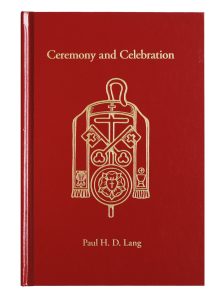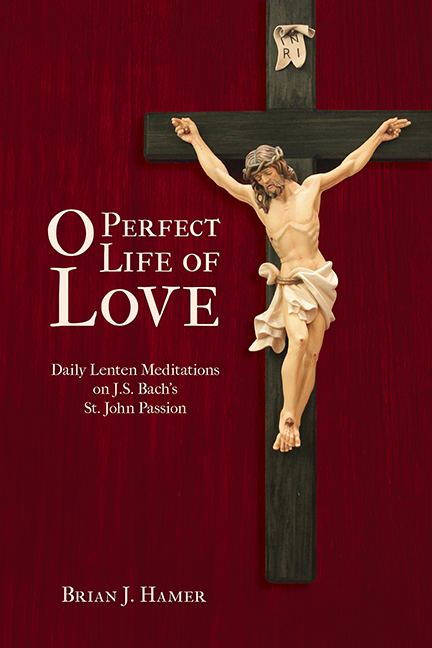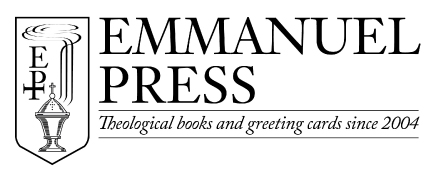THE LATEST NEWS
The Word “transforms the ground”
 “[The Lord] sows where no reasonable sower would sow: on the trodden path, in rocky and thorny ground. And His Word does what no ordinary sower could expect of his seed. It transforms the ground. It bears fruit in the unlikely hearts of rebellious men. He sows because He is good and His seed is good and we need it.
“[The Lord] sows where no reasonable sower would sow: on the trodden path, in rocky and thorny ground. And His Word does what no ordinary sower could expect of his seed. It transforms the ground. It bears fruit in the unlikely hearts of rebellious men. He sows because He is good and His seed is good and we need it.
“He is no respecter or persons and does not discriminate. He sows His seed lavishly, inviting all those with ears to hear. No one comes to this kingdom worthily. There are no good people, no plowed and ready ground. There are only sinners. Some are stubborn and deny that they are sinners or deny that Jesus is the Lord’s Christ. But some – by grace, not because they are good or smart, but because He is good – are transformed and acknowledge their need for grace and the lordship of Jesus Christ. He who has gets more. The kingdom is not built on justice, but on grace.”
_______
This is an excerpt from the sermon for Sexagesima in Thy Kingdom Come by David H. Petersen. Sexagesima is the second Sunday in Pre-Lent, which was on February 23 this year. The readings for this particular Sunday according to the historic lectionary are Isaiah 55:10-13, 2 Corinthians 11:19-12:9, and Luke 8:4-15.
Welcome to our updated and redesigned website!
Welcome! We are thrilled to unveil a fresh look for our website. We hope that the functional, clean layout will serve our customers well, in addition to the much-requested expansion of payment options.
 As always, here you will find the best in confessional and liturgical Lutheran theological titles, including Ceremony and Celebration. This book is an essential resource not only for pastors, elders, altar guild members, organists, choir directors, and other congregational leaders, but also and especially for earnest laity who want to better understand the way we worship.
As always, here you will find the best in confessional and liturgical Lutheran theological titles, including Ceremony and Celebration. This book is an essential resource not only for pastors, elders, altar guild members, organists, choir directors, and other congregational leaders, but also and especially for earnest laity who want to better understand the way we worship.
“God is a God of order. He is against disorder, confusion, slovenliness, crudeness, and ugliness. If that is true in every area of our lives, it is particularly true when God is present with us in a special way in the church’s worship. The Old Testament worship which God prescribed was, in every detail of the tabernacle and temple, the sacred vessels and vestments, the rites and ceremonies of the services, orderly and beautiful. We have no such detailed prescriptions in the New Testament, but the principle remains. The rules governing the traditional ceremonies are based on the law of order.” (p. 62)
Bulk discounts for O Perfect Life of Love – Daily Lenten Meditations
A recent customer comment: “The book and concept prompted me to listen to Bach’s St. John Passion for the first time and I was deeply moved. I’m considering using this as a Lenten devotion for our entire congregation to follow.”
O Perfect Life of Love allows the reader to become acquainted with or revisit the beloved St. John Passion. What may have seemed inaccessible due to language or musical knowledge is now available at one’s fingertips via a well-established English translation for the chorales and arias, along with the words of Scripture.
Bulk discounts are as follows: 10% off 10-19 books, 20% off 20-29 books, 30% off 30+ books. Contact us for a customized invoice rather than ordering online.
Senkbeil and Hettrick endorse O Perfect Life of Love
 “The monumental Passion According to St. John well underscores Bach’s reputation as ‘the fifth evangelist.’ In this Lenten guide, Chaplain Hamer helps us listen, learn, and grasp anew the depth of our Savior’s sacrificial love and life.”
“The monumental Passion According to St. John well underscores Bach’s reputation as ‘the fifth evangelist.’ In this Lenten guide, Chaplain Hamer helps us listen, learn, and grasp anew the depth of our Savior’s sacrificial love and life.”
Dr. Harold L. Senkbeil
Author of The Care of Souls (Lexham, 2019)
Executive Director Emeritus; Collegium Fellow
DOXOLOGY: The Lutheran Center for Spiritual Care and Counsel
________
“In O Perfect Life of Love: Daily Lenten Meditations on J. S. Bach’s St. John Passion, theologian and musician Brian J. Hamer takes the reader on a pastoral journey through Bach’s masterwork, with its forty movements as the basis of devotions for the forty days of Lent. He offers a unique exploration of Bach’s musical language to express meaning, both spiritual and literal. As you experience vividly the crucifixion narrative, you recognize yourself in the guilt and you sense the forgiveness. Powered by Pastor Hamer’s insightful understanding of biblical history — as well as his wide knowledge of hymnody, Lutheran music, technical musical forms, and liturgical practice of Bach’s environment — this is a book that can be read time and again, even beyond the Lenten season.”
Dr. Jane Schatkin Hettrick
Professor emeritus – Rider University
Director of Music – Redeemer Lutheran Church, Bayside, NY
Rev. Sean Daenzer, Director of LCMS Worship, endorses Hamer’s new book
“Rev. Hamer is an unpretentious guide to open our ears to Bach’s music, our minds to John’s Gospel and the Passion’s libretto, and our hearts to the evangelical faith. Thoughtfully divided among the days of Lent, these devotions will help anyone turn a recording of the St. John Passion into a 40-day meditation on Christ’s glorious sacrifice. The musician will benefit from these theological insights into Bach’s famous work, as will the modern Lutheran preacher.”
Rev. Sean Daenzer, Director of LCMS Worship
and Chaplain at the LCMS International Center
O Perfect Life of Love is suitable not only for individual devotions but also for the entire family. Find for more details, purchasing information, and an excerpt here.

Let’s stay in touch! To receive the most current information on our products and new releases, join our email list today!

